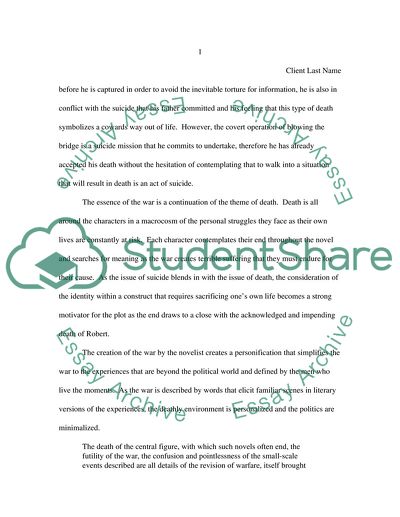Cite this document
(For Whom the Bell Tolls by Ernest Hemmingway Term Paper, n.d.)
For Whom the Bell Tolls by Ernest Hemmingway Term Paper. Retrieved from https://studentshare.org/literature/1719146-for-whom-the-bell-tolls
For Whom the Bell Tolls by Ernest Hemmingway Term Paper. Retrieved from https://studentshare.org/literature/1719146-for-whom-the-bell-tolls
(For Whom the Bell Tolls by Ernest Hemmingway Term Paper)
For Whom the Bell Tolls by Ernest Hemmingway Term Paper. https://studentshare.org/literature/1719146-for-whom-the-bell-tolls.
For Whom the Bell Tolls by Ernest Hemmingway Term Paper. https://studentshare.org/literature/1719146-for-whom-the-bell-tolls.
“For Whom the Bell Tolls by Ernest Hemmingway Term Paper”, n.d. https://studentshare.org/literature/1719146-for-whom-the-bell-tolls.


